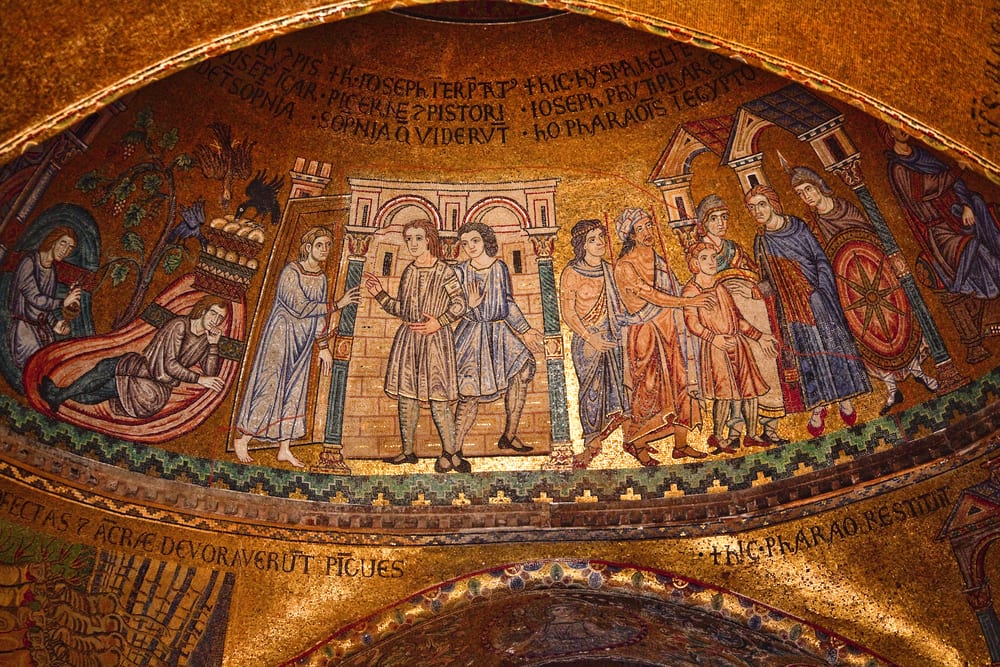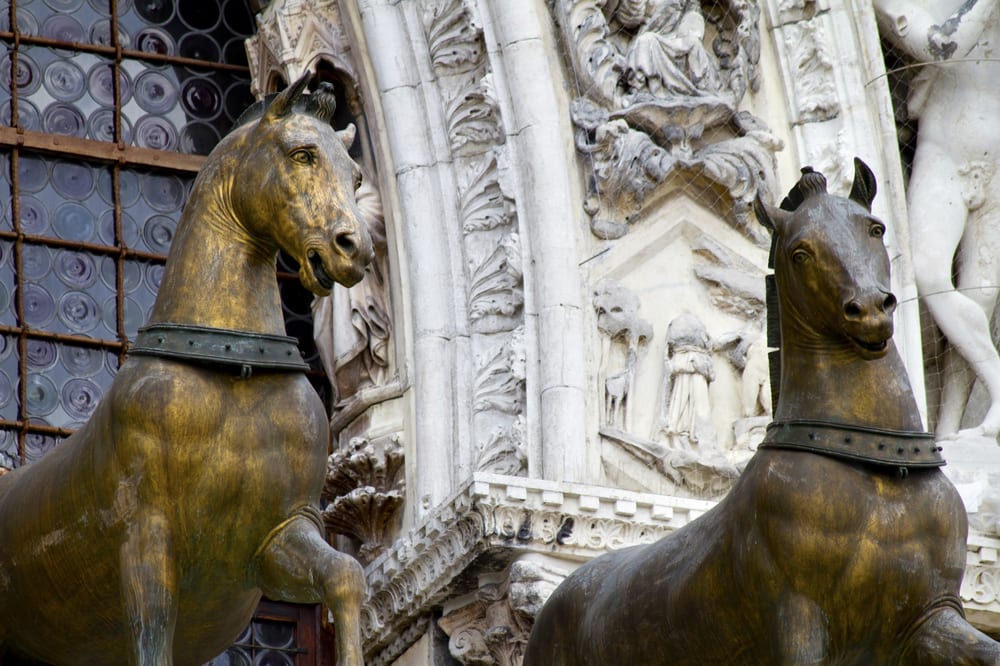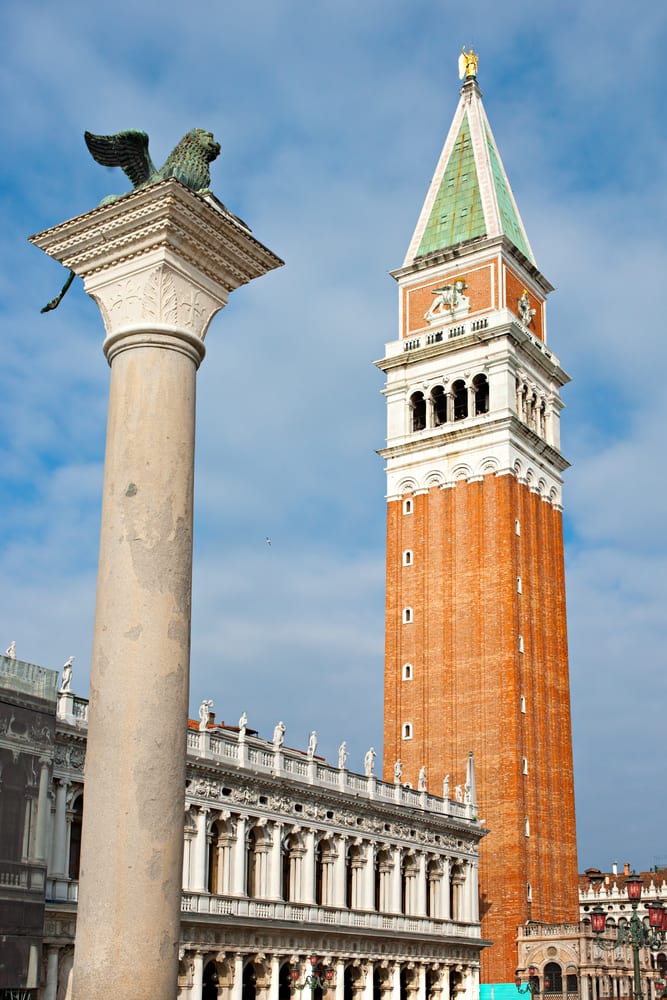St. Mark’s Basilica, one of the most fascinating churches in Italy
St. Mark’s Basilica is one of the most-visited sights in Venice, and a
must-see on any traveler’s Italy itinerary! But with a history that
stretches all the way back to the 9th century A.D., it’s also a church
with a lot of interesting stories and legends behind it.
Here are six of the most fascinating facts about St. Mark’s Basilica!
The basilica began with a swashbuckling tale of kidnapping

St. Mark’s has pretty interesting origins…
The first St. Mark’s Basilica was built on this spot in the 9th
century to house very sacred relics—relics that had been stolen! In 828,
merchants from Venice stole the body of St. Mark the Evangelist, one of
the four Apostles, from Alexandria, Egypt. According to the legend,
they snuck them past the (Muslim) guards by hiding them under layers of
pork in barrels!
While at sea, a storm almost drowned the graverobbers and their
precious cargo, it’s said that St. Mark himself appeared to the captain
and told him to lower the sails. The ship was saved, and the merchants
said they owed their safety to the miracle.
The entire story is pictured on the 13th-century mosaic above the left door as you enter the basilica.
There’s enough mosaic here to cover 1.5 American football fields…

Just one of the dozens of mosaics in St. Mark’s Basilica…
There are more than 85,000 square feet (or 8,000 square meters) of mosaic in St. Mark’s Basilica… or enough mosaic to cover over 1.5 American football fields! The mosaics were done over 8 centuries, mostly in gold, and the result is astonishing. Enter the basilica at different times of day to see how the light makes the colors, and scenes, look different.
…and there are more than 500 columns
Just another example of the sheer size, and amount of amazing stuff, in St. Mark’s is the number of columns. There are more than 500 columns and capitals in the basilica, and most are Byzantine, dating between the 6th and 11th centuries. Some classical, 3rd-century capitals are mixed in, too!A lot of the basilica’s treasures came from the Crusades—and from Constantinople

The bronze horses of St. Mark’s Basilica, originally from Constantinople!
The Fourth Crusade, in particular, gave St. Mark’s Basilica a windfall. After all, this was the Crusade that ended, in 1204, with the conquest of Constantinople (modern-day Istanbul).
The result? A lot of treasure was shipped to Venice, and installed in St. Mark’s Basilica—including the four bronze horses, icon of the Madonna Nicopeia, enamels of the Golden Altar-piece, relics, crosses, chalices, and patens!

The belltower of St. Mark’s Basilica
The Pala d’Oro puts the Crown Jewels to shame
Forget the glittering gems at the Tower of London: The Royal Family has nothing on St. Mark’s Basilica! The Pala d’Oro, a Byzantine altar screen of gold, is studded with hundreds of gems—literally. They include 1,300 pearls, 300 emeralds, 300 sapphires, 400 garnets, 100 amethysts, plus rubies and topazes.That bell tower? It collapsed once… not so long ago
The 323-foot (98.6-meter) campanile of St. Mark’s dates back to the 9th century… but it had to be rebuilt in 1903. The reason? It collapsed! It had been reworked in the 16th century, and apparently not that well: It collapsed on July 14, 1902. (To be fair, it had survived several earthquakes before that!). Although it buried the Basilica’s balcony in rubble, fortunately, the church itself was saved. But the incident was embarrassing enough!From 1903 to 1912, the belltower was rebuilt exactly as it had been… except with better, safer techniques.
No comments:
Post a Comment